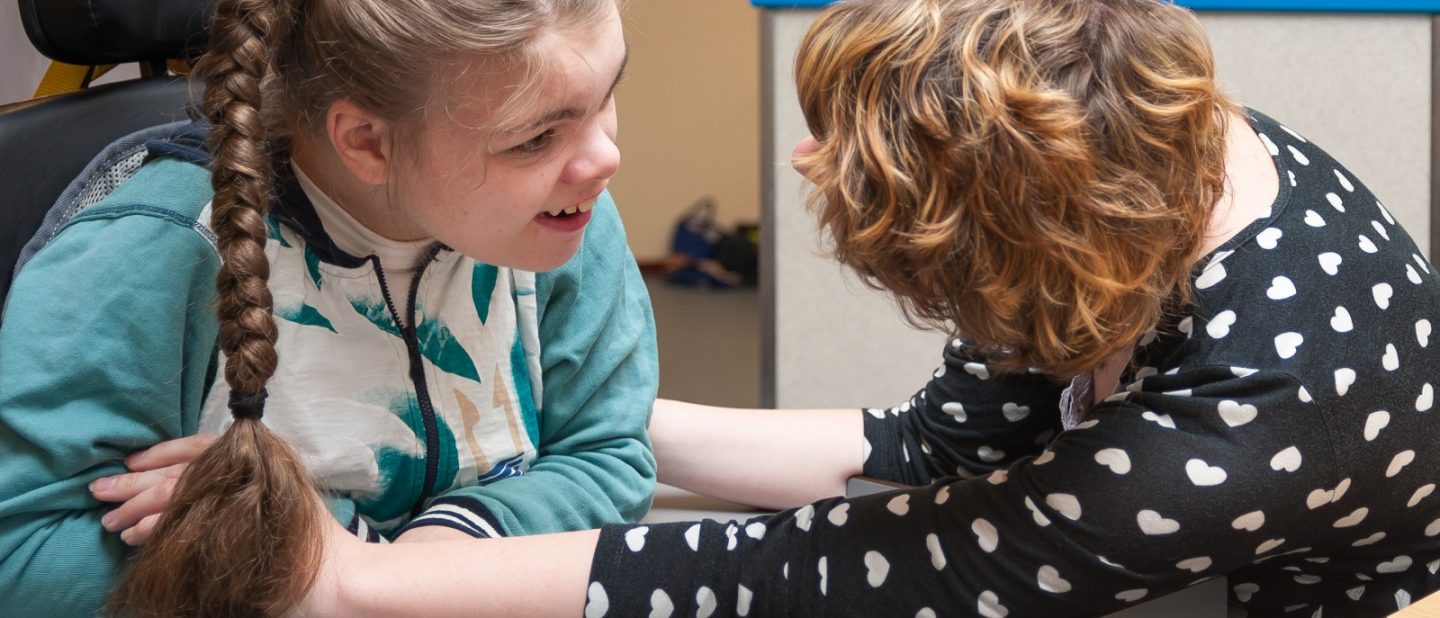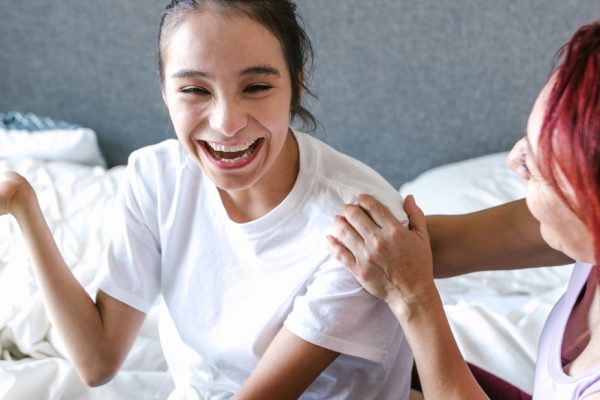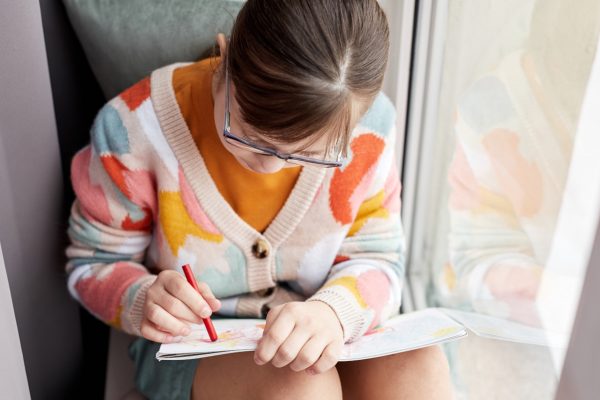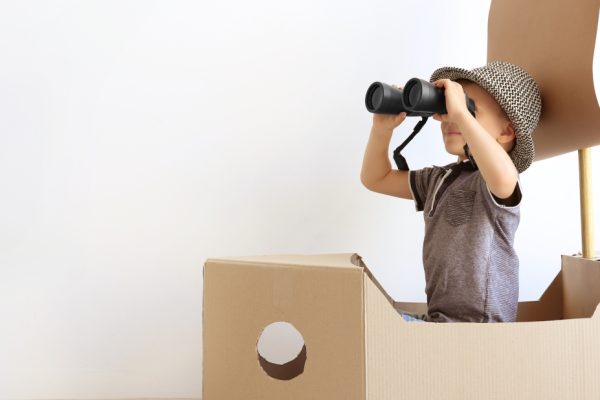
The ABC of therapy: what’s out there for your child?
When we think of therapy we often default to the ‘big three’ of physio, speech and OT – but there are many different options for you to consider for your child, so we’ve put together a quick reference guide to help you with your research.
*Please note that these are not recommendations or endorsements – not all therapies will be covered under the NDIS and some may be more experimental than others. Always consult with your child’s health provider or other trusted professional.
A
ABA (APPLIED BEHAVIOUR ANALYSIS)
ABA is a set of strategies most commonly used for children on the autism spectrum (but can be used for individuals with other conditions) with a focus on improving specific behaviours including communication, social skills, life skills, self- regulation and self-care. It is based on the belief that human behaviour is influenced by stimuli or events in the environment and behaviour that is followed by positive reactions or consequences is more likely to be repeated.
More info: abia.net.au/resources/information-kits
ANIMAL ASSISTED THERAPY
Animal assisted therapy is used in conjunction with traditional therapies such as occupational therapy, physio and especially psychology services incorporating animals into the treatment plan as a way of motivating, modelling and calming anxiety. Dogs are the most commonly used animal but horses, cats, pigs and even birds have been known to be used as a way of taking advantage
of the human animal bond that goes back to our ancestors.
More info: www.andaat.org.au
AUDITORY VERBAL THERAPY
This is a specialist early intervention programme providing parents with the skills to maximise their deaf child’s speech and language development. Essentially it teaches a child to develop listening skills through one-to-one therapy and uses the child’s residual hearing along with their assistive devices such as hearing aids, cochlear implants or FM systems.
More info: aussiedeafkids.org.au/decisions.html
C
CRANIAL OSTEOTHAPY
Osteopathy is a hands-on approach to healthcare recognising the link between the structures of the body and the way it works. A cranial osteopath will very gently manipulate areas of the head to reduce tightness and strain. It is primarily a treatment used on babies but a practician can also work with adults, teenagers and children.
More info: www2.osteopathy.org.au
CONSTRAINT INDUCED MOVEMENT THERAPY
CiMT is a therapy option targeted at improving upper limb function – particularly children with hemiplegic cerebral palsy. Often delivered as part of a therapy ‘intensive’ – play-based tasks are carried out while constraining movement in the least-affected limb in order to engage and strengthen a child’s affected arm.
More info: www.cerebralpalsy.org.au/super-learning-with-treasure-island-cimt/
CONDUCTIVE EDUCATION
Conductive Education is not strictly a therapy or treatment but a method of group learning for children with neurological and mobility impairment, which provides opportunities to learn essential life skills and independence in a fun, playful setting. Physiotherapy, occupational therapy, speech/ language pathology and teaching are combined during group sessions with tasks set to meet the needs of individuals within the group.
More info: research.cerebralpalsy.org.au
CUEVAS MEDEK EXERCISE
CME is a method of exercise aimed at provoking improved postural responses in children working towards developmental milestones. A therapist physically manipulates a child to stretch out tight muscles and train the muscles in groups to help the child to gain control over his or her trunk. Exercises are repeated until the reaction of the brain becomes automatic and the body reacts normally to situations where required to keep its balance.
More info: www.napacenter.org/our-programs/cuevas-medek-exercise
D
DIR/FLOOR TIME INTERVENTION
This is a therapy aimed primarily at children on the autism spectrum or with social/emotional challenges which encourages interaction through play in order to promote social, emotional and intellectual development. During a session, a parent or provider joins in the child’s activities and follows the child’s lead with the emphasis on back and forth play.
More info: www.icdldirectory.com/australia
DANCE THERAPY
Dance movement therapy is the use of dance and movement to further the physical, emotional, cognitive, social, functioning of a person. Dance movement therapists combine the elements of dance, movement systems, creative processes, and psychological and scientific theories, to address the specific needs of groups and individuals.
More info: dtaa.org.au
E
EARLY INTENSIVE BEHAVIOURAL INTERVENTION
Intensive Behavioural Intervention applies the principals of ABA in an intensive setting for children with autism and other neurological conditions to address skills development and appropriate behaviour. It is a highly structured approach for teaching children under the age of five.
More info: raisingchildren.net.au/autism/therapies-guide/ibi
EARLY START DENVER MODEL
Early Start Denver Model (ESDM) is a play-based, behavioural, early intervention program for children with autism. It teaches children how communicating with others can help them, so they’re motivated to keep trying.
More info: raisingchildren.net.au/autism/therapies-guide/early-start-denver-model
ENLITEN HARNESS SYSTEM
The Enliten Harness System is more formally known as a “fall-arrest and body-weight-support system”. The harness provides children with independent movement that allows interaction with family, friends and their environment.
More info: therapiesforkids.com.au/gobabygo-enliten-harness-system
therapiesforkids.com.au/gobabygo- enliten-harness-system
F
FARM THERAPY
Farms which build on the benefits of animal assisted therapy are starting to pop up around Australia with a range of supervised, structured programs to fit a variety of requirements. A Google search will help you see if there’s a centre near you.
FELDENKRAIS
The Feldenkrais method is a type of exercise therapy devised by Moshé Feldenkrais. Trained practitioners use touch, movement, guided imagery and mindful body awareness to stimulate the brain with the aim of making improvements to movement and posture.
More info: www.feldenkrais.org.au
H
HABIT-ILE
HABIT-ILE (short for Hand Arm Bimanual Intensive Training Including Lower Extremity Training) is an intensive play-based therapy for children who have difficulties with hand and gross motor function. Itis suitable for children who have mild to moderate cerebral palsy or similar condition (GMFCS I-III) who can follow instructions and participate in a group environment.
Learn more at:www.cerebralpalsy.org.au/habit-ile
HIPPOTHERAPY
Hippotherapy is defined as the use of horse riding or work with horses as a therapeutic or rehabilitative treatment elements of speech, physio and OT can all be incorporated into a session with a specially trained therapist.
More info: www.rda.org.au/hippotherapy.aspx
HYDROTHERAPY
Hydrotherapy is the use of water as part of a treatment programme. With special exercisesin a warm pool, hydro can help strength and muscle tone as well as alleviate aches and pains. A physiotherapist provider will be able to give you information on hydrotherapy sessions and their availability.
I
INTEGRATED LISTENING
The Integrated listening system integrates sound and movement to create a foundation for learning, attention and behaviour. The method is based on the science of neuroplasticity – that is, that the brain grows, changes and creates new pathways in response to stimulation and input from the environment. Practioners take a staged approach, starting with the fundamentals of sensory integration and then extending through more complex cognitive functions, including language, self-expression and social skills.
More info: integratedlistening.com.au
INTENSIVE SUIT THERAPY
Suit therapy is an external support system used to provide a child with increased proprioception, joint feedback, correct alignment and awareness of where their body is in space. Suits vary considerably in the amount of support they provide. An increasing number of centres around Australia offer forms of suit therapy including TheraSuit and the NeuroSuit at Napa. Intensive suits are worn in conjunction with a ‘Fun Frame’ or Spider Cage (see below).
L
LEGO THERAPY
A play-based method of therapy for children that often takes place in a group setting. This type of social play promotes social interaction, turn-taking skills, sharing, collaborative problem-solving and the learning of concepts.
More info: plumtree.org.au
LOVAAS PROGRAM
The Lovaas approach is a behaviour treatment model for children with autism, which uses the principals of ABA. Through intensive play-based sessions there is a focus on breaking complex tasks into small achievable steps, rewarding and praising children as they make progress while ignoring ‘difficult’ behaviour.
More info: www.lovaas.com
M
MUSIC THERAPY
Music therapy is defined by the Australian Music Therapy Association Inc (AMTA) as a research- based practice and profession in which music is used to actively support people as they strive to improve their health, functioning and wellbeing. Music therapy can improve cognitive functioning, social communication skills, motor skills and assist in emotional development.
More info: www.austmta.org.au
O
OCCUPATIONAL THERAPY
Occupational therapists are qualified health professionals who work with people of all ages and abilities to do the things they need and want to in all aspects of life, such as taking care of oneself and others, working, volunteering, and participating in hobbies, interests and social events. The primary goal of occupational therapy is to enable people to participate in the occupations of everyday life.
More info: www.otaus.com.au
P
PHYSIOTHERAPY
Broadly, physiotherapists use a range of methods to improve movement, increase strength and balance, reduce pain and stiffness, speed up healing and improve overall quality of life.
More info: australian.physio
S
SAND THERAPY (SANDPLAY)
The Sandplay Therapy Association of New Zealand and Australia (STANZA) says “Sandplay is ‘hands on’ psychological work, and is an adjunct to talk therapy. It is a powerful therapeutic method that facilitates the psyche’s natural capacity for healing.” A Sandplay session consists of the client creating scenes in a sandbox with the therapist’s collection of symbols and realistic figurines and is a bridge between talk and expressive therapies.
More info: http://www.stanza.asn.au
SENSORY INTEGRATION THERAPY
Sensory integration therapy aims to help children with sensory processing disorders by exposing them to different sensory experiences in a structured, repetitive way helping children to learn to use their five senses together to interpret sensory information more effectively.
More info: www.otaus.com.au/find-an- occupational-therapist to find an OT trained in sensory integration.
SOUND THERAPY
Practitioners of sound therapy claim it improves listening, learning and communication and that by listening to specially filtered music and stories through earphones, a child’s auditory processing system can be enhanced.
Sound therapy has been described as exercise for the ear and the auditory processing and sensory integration centres in the brain.
More info: mysoundtherapy.com/what-is-sound-therapy/children-learning
SPEECH THERAPY
Speech pathologists study, diagnose and treat communication disorders, including difficulties with speaking, listening, understanding language, reading, writing, social skills, stuttering and using voice. They work with people who have difficulty communicating because of developmental delays, stroke, brain injuries, learning disability, intellectual disability, cerebral palsy, dementia and hearing loss, as well as other problems that can affect speech and language.
More info: www.speechpathologyaustralia.org.au
SPIDER CAGE
Spider cage is a suspension system, which works with use of belts, elastic cords and is used in conjunction with suit therapy. When using the cage a child will work with a trained physiotherapist
to carry out activities such as crawling, standing, jumping etc. with the aim of improving strength, balance, sensory integration, developing a sense of security and mastering respective activities.
V
VITALSTIM
VitalStim therapy is a treatment for patients suffering from difficulty swallowing or dysphagia. VitalStim may be used with infants and children suffering from a broad range of diagnosis. It is a non-invasive, external electrical stimulation therapy that uses specifically designed electrodes applied to the muscles of the throat to promote proper swallowing.
More info: napacentre.com.au/our-programs/vitalstim-and-swallowing-therapy/
W
WILBARGER PROTOCOL
The Wilbarger protocol involves using a soft plastic surgical brush (under the guidance of a trained therapist) to provide deep pressure and brushing to the skin, followed by joint compressions. This method provides deep stimulation to the nerve endings in the skin and is used to treat children who have sensory processing disorders.
More info: therapiesforkids.com.au/wilbarger-therapressure-brushing-protocol/








